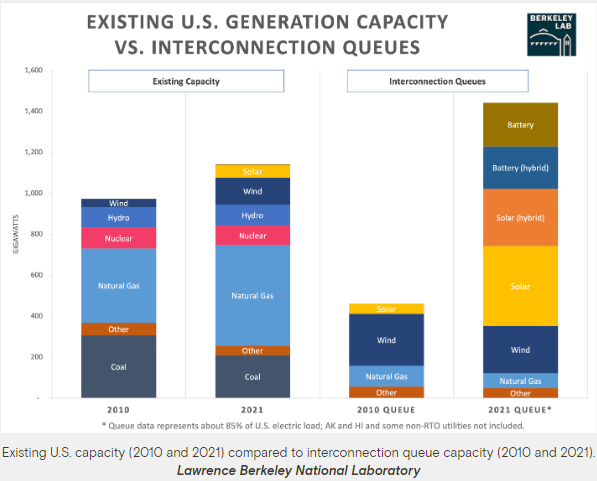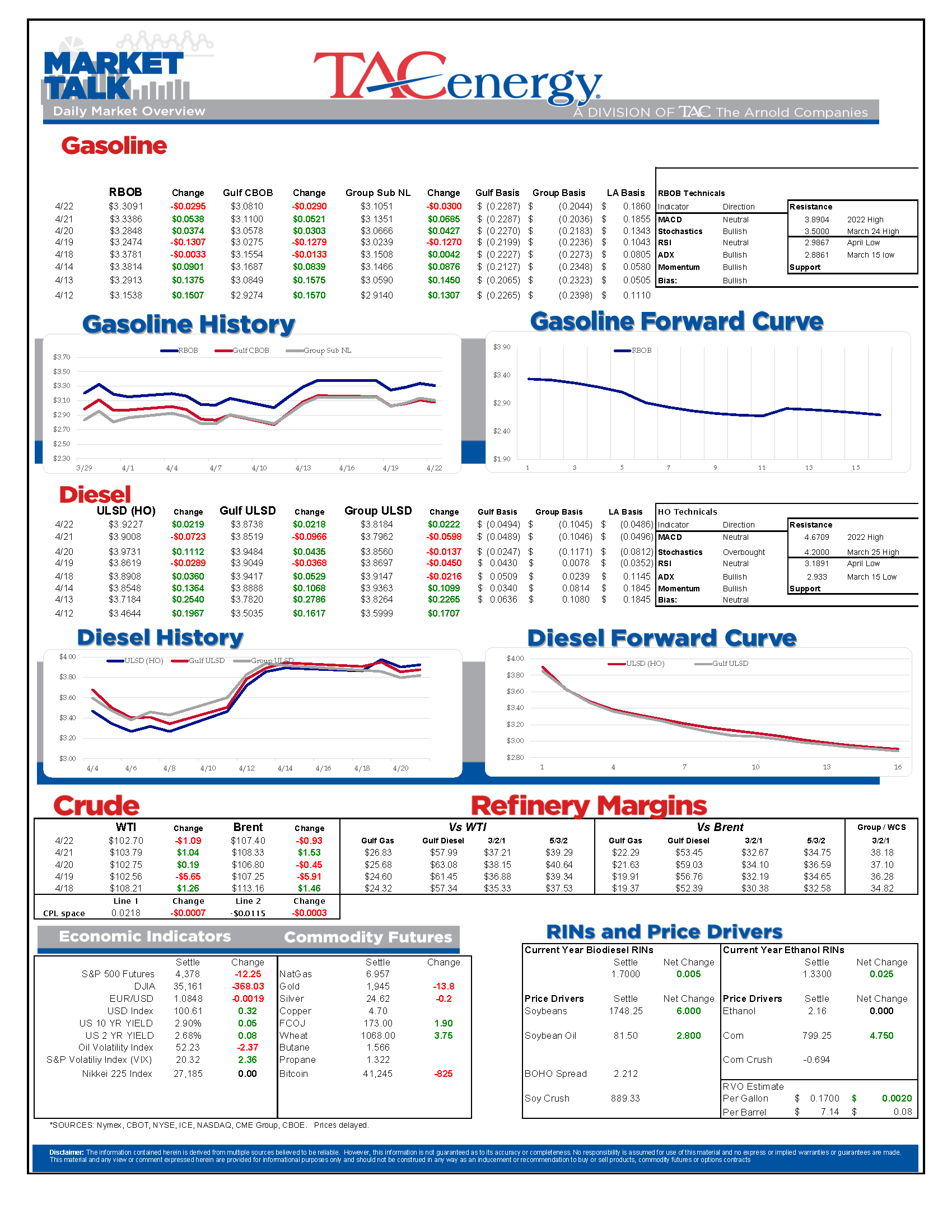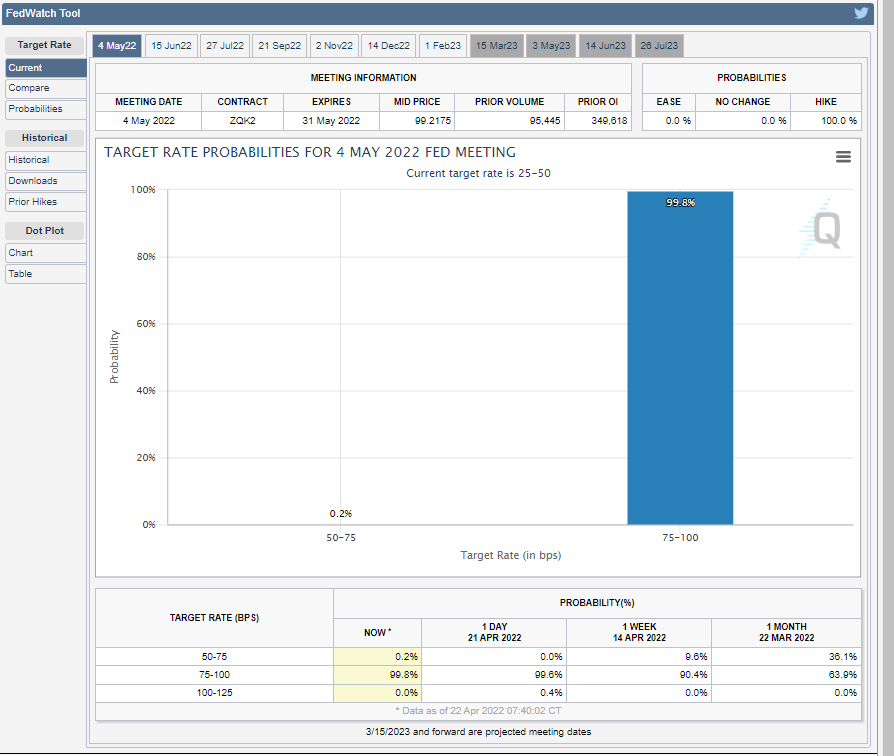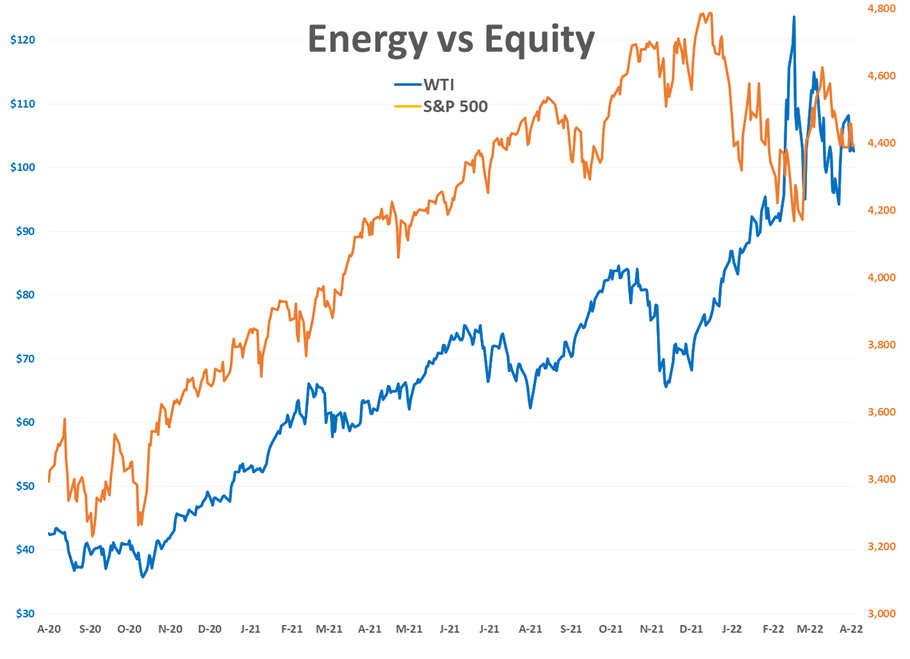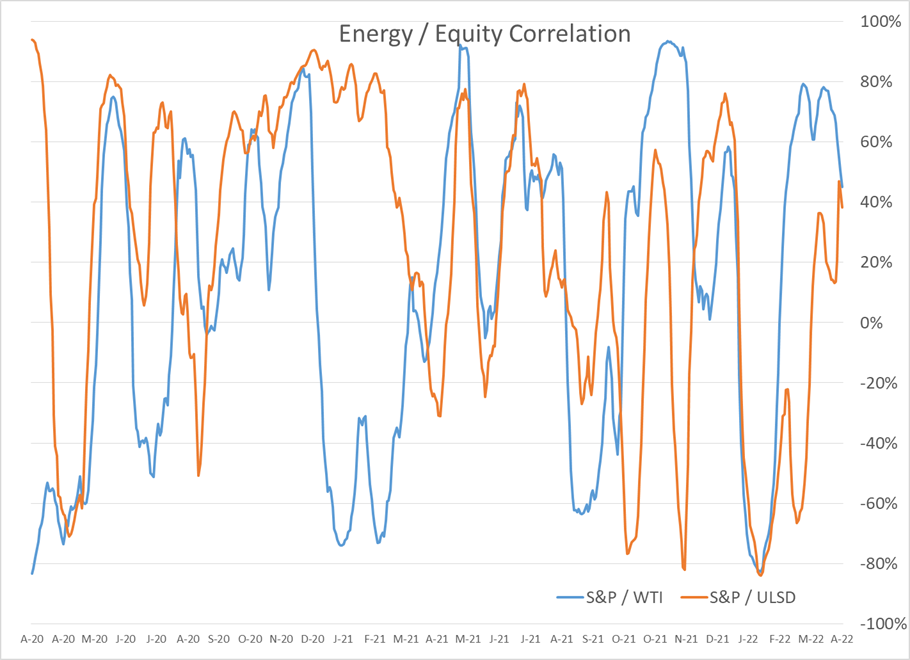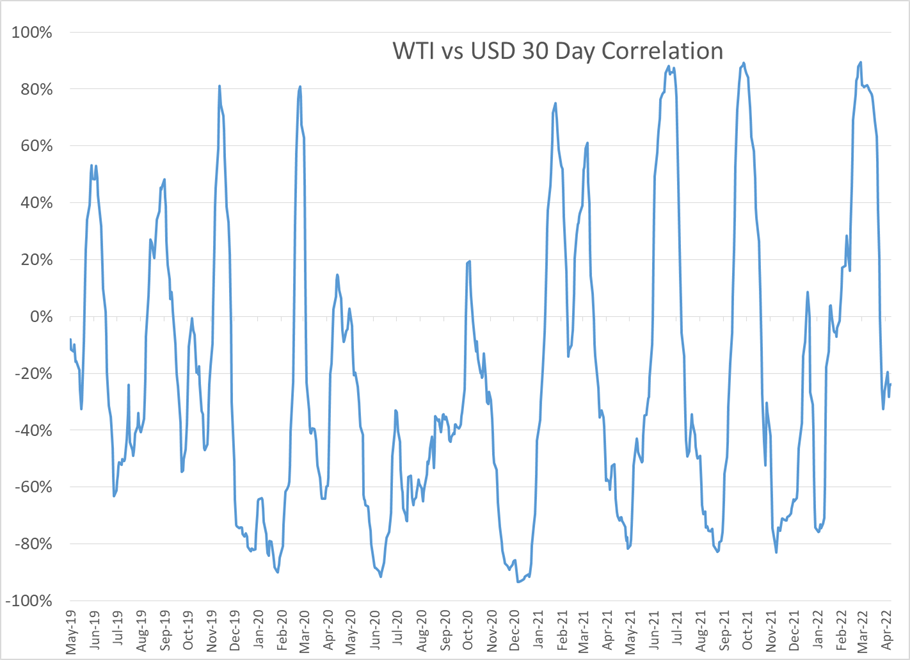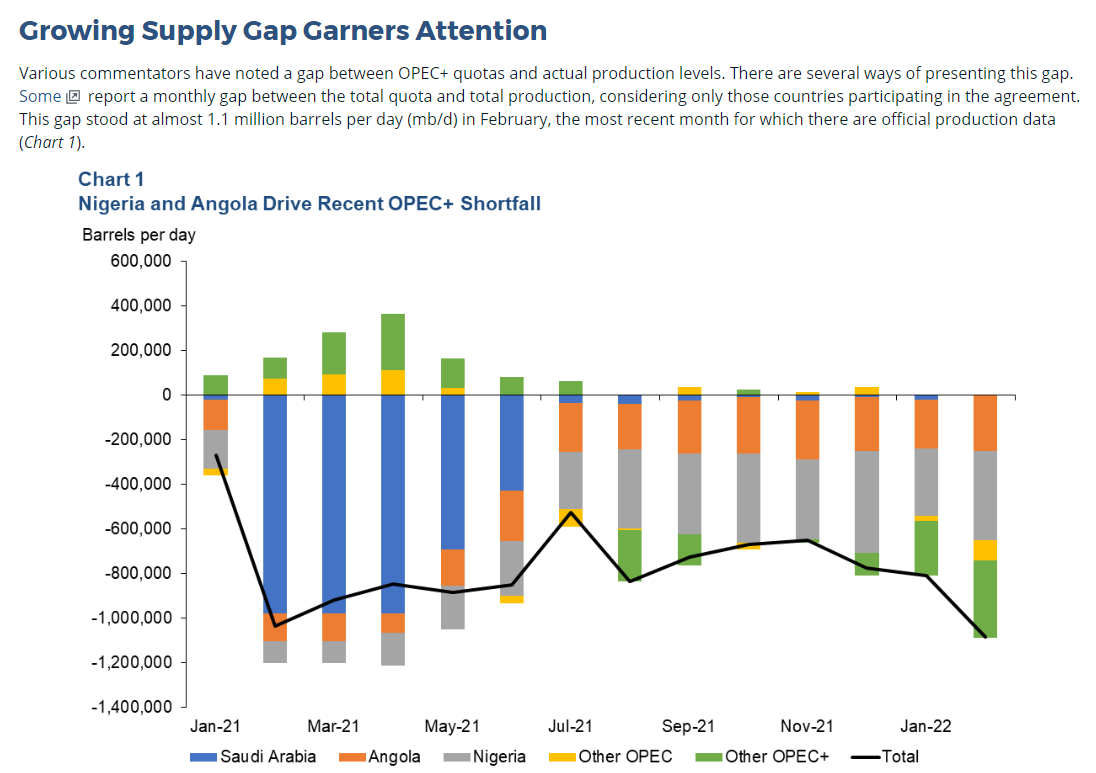Oil And Gasoline Prices Are Seeing Modest Losses This Morning

Oil and gasoline prices are seeing modest losses this morning, which are being blamed on demand fears coming from China and a hawkish FED, while distillates are seeing modest gains after Thursday’s big drop.
Crude oil prices would end the week with a loss if they settle near current values, but they did manage a higher high and higher low on the charts, and didn’t threaten the bullish trend line which keeps the door open for higher prices to come. It’s a similar story for distillates, which have stalled out since racing to $4 once they broke out of their triangle pattern, but are still leaving the door open to higher prices in the near future. Gasoline meanwhile looks the weakest both fundamentally and technically, even though we’re just around the corner from the annual parade of “driving season” headlines that come right about when prices actually peak for the season.
Comments from the FED Chair all but guaranteed a 50 point rate increase at the May 4 meeting, and set the stage for even larger increases in the next 3 months. Looking at the CME’s Fedwatch tool that analysis activity in FED fund futures, a month ago, there was a 0% probability that the FED would raise the target rate to 2 percent by July, and today that probability is at 95%.
Reports from China suggest the country’s oil demand is dropping 20% in April due to the Shanghai lockdowns, which is actually kind of scary when you think if where prices might be had the world’s largest importer not been shutting down for the past month.
Meanwhile, another report based on satellite data of Russian oil fields gives another reminder that the country’s output is just now starting to decline more dramatically as the deals struck before the invasion of Ukraine are now running out. Many refiners in the country were already forced to slash rates or shut down completely due to a lack of outlets for their product, reducing total output by 15% or more since the start of the war.
A Dallas FED study this week took a closer look at the OPEC & Friends supply gap as the cartel has been unable to meet its oil output quota for several months. The report highlights how “…infrastructure issues and the difficulty of attracting sufficient investment to offset production declines at existing wells...[mean] many OPEC+ countries are unable to take advantage of the higher production quotas they will receive under the group’s agreement.”
If you’ve tried to buy a car in the past year you probably know it’s not just oil output that’s struggling with infrastructure issues and supply bottlenecks, a report this week highlights how numerous renewable energy projects are facing similar hurdles, creating a growing backlog of projects that are delayed, some of which will likely eventually fall by the wayside as a result.
A Reuters article this morning highlights the shifts US refiners are making to maximize diesel output when they would traditionally favor gasoline, and gives another reminder why inland refiners are having a much harder time finding a home for their production than coastal facilities.
Click here to download a PDF of today's TACenergy Market Talk.
Latest Posts
Gasoline Futures Are Leading The Way Lower This Morning
The Sell-Off Continues In Energy Markets, RBOB Gasoline Futures Are Now Down Nearly 13 Cents In The Past Two Days
Week 15 - US DOE Inventory Recap
Prices To Lease Space On Colonial’s Main Gasoline Line Continue To Rally This Week
Social Media
News & Views
View All
Gasoline Futures Are Leading The Way Lower This Morning
It was a volatile night for markets around the world as Israel reportedly launched a direct strike against Iran. Many global markets, from equities to currencies to commodities saw big swings as traders initially braced for the worst, then reversed course rapidly once Iran indicated that it was not planning to retaliate. Refined products spiked following the initial reports, with ULSD futures up 11 cents and RBOB up 7 at their highest, only to reverse to losses this morning. Equities saw similar moves in reverse overnight as a flight to safety trade soon gave way to a sigh of relief recovery.
Gasoline futures are leading the way lower this morning, adding to the argument that we may have seen the spring peak in prices a week ago, unless some actual disruption pops up in the coming weeks. The longer term up-trend is still intact and sets a near-term target to the downside roughly 9 cents below current values. ULSD meanwhile is just a nickel away from setting new lows for the year, which would open up a technical trap door for prices to slide another 30 cents as we move towards summer.
A Reuters report this morning suggests that the EPA is ready to announce another temporary waiver of smog-prevention rules that will allow E15 sales this summer as political winds continue to prove stronger than any legitimate environmental agenda. RIN prices had stabilized around 45 cents/RIN for D4 and D6 credits this week and are already trading a penny lower following this report.
Delek’s Big Spring refinery reported maintenance on an FCC unit that would require 3 days of work. That facility, along with several others across TX, have had numerous issues ever since the deep freeze events in 2021 and 2024 did widespread damage. Meanwhile, overnight storms across the Midwest caused at least one terminal to be knocked offline in the St. Louis area, but so far no refinery upsets have been reported.
Meanwhile, in Russia: Refiners are apparently installing anti-drone nets to protect their facilities since apparently their sling shots stopped working.
Click here to download a PDF of today's TACenergy Market Talk.

The Sell-Off Continues In Energy Markets, RBOB Gasoline Futures Are Now Down Nearly 13 Cents In The Past Two Days
The sell-off continues in energy markets. RBOB gasoline futures are now down nearly 13 cents in the past two days, and have fallen 16 cents from a week ago, leading to questions about whether or not we’ve seen the seasonal peak in gasoline prices. ULSD futures are also coming under heavy selling pressure, dropping 15 cents so far this week and are trading at their lowest level since January 3rd.
The drop on the weekly chart certainly takes away the upside momentum for gasoline that still favored a run at the $3 mark just a few days ago, but the longer term up-trend that helped propel a 90-cent increase since mid-December is still intact as long as prices stay above the $2.60 mark for the next week. If diesel prices break below $2.50 there’s a strong possibility that we see another 30 cent price drop in the next couple of weeks.
An unwind of long positions after Iran’s attack on Israel was swatted out of the sky without further escalation (so far anyway) and reports that Russia is resuming refinery runs, both seeming to be contributing factors to the sharp pullback in prices.
Along with the uncertainty about where the next attacks may or may not occur, and if they will have any meaningful impact on supply, come no shortage of rumors about potential SPR releases or how OPEC might respond to the crisis. The only thing that’s certain at this point, is that there’s much more spare capacity for both oil production and refining now than there was 2 years ago, which seems to be helping keep a lid on prices despite so much tension.
In addition, for those that remember the chaos in oil markets 50 years ago sparked by similar events in and around Israel, read this note from the NY Times on why things are different this time around.
The DOE’s weekly status report was largely ignored in the midst of the big sell-off Wednesday, with few noteworthy items in the report.
Diesel demand did see a strong recovery from last week’s throwaway figure that proves the vulnerability of the weekly estimates, particularly the week after a holiday, but that did nothing to slow the sell-off in ULSD futures.
Perhaps the biggest next of the week was that the agency made its seasonal changes to nameplate refining capacity as facilities emerged from their spring maintenance.
PADD 2 saw an increase of 36mb/day, and PADD 3 increased by 72mb/day, both of which set new records for regional capacity. PADD 5 meanwhile continued its slow-motion decline, losing another 30mb/day of capacity as California’s war of attrition against the industry continues. It’s worth noting that given the glacial pace of EIA reporting on the topic, we’re unlikely to see the impact of Rodeo’s conversion in the official numbers until next year.
Speaking of which, if you believe the PADD 5 diesel chart below that suggests the region is running out of the fuel, when in fact there’s an excess in most local markets, you haven’t been paying attention. Gasoline inventories on the West Coast however do appear consistent with reality as less refining output and a lack of resupply options both continue to create headaches for suppliers.

